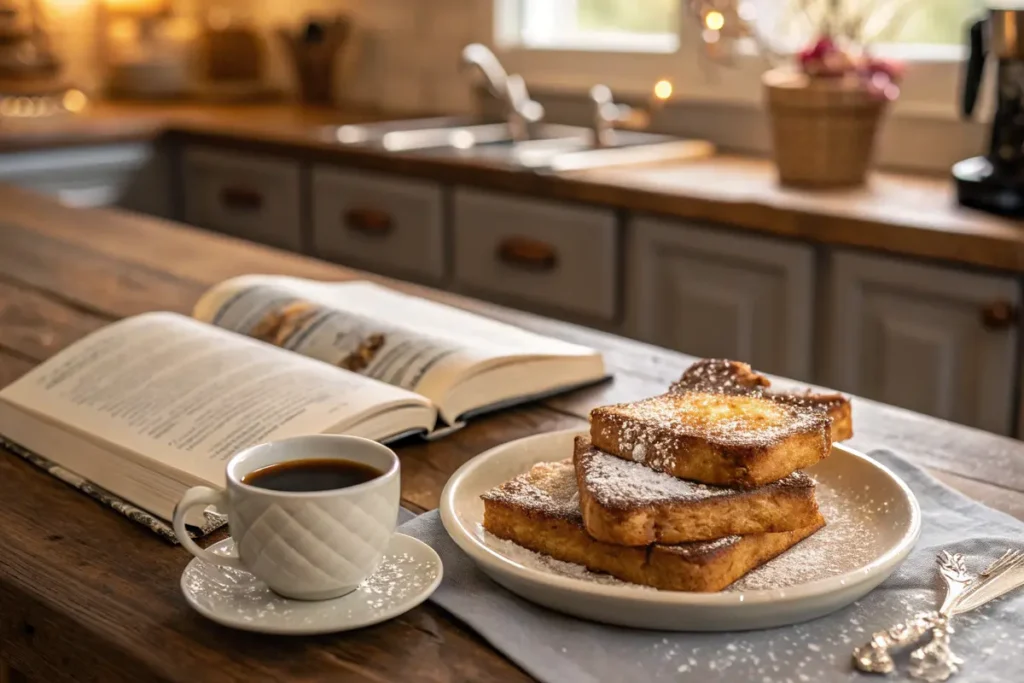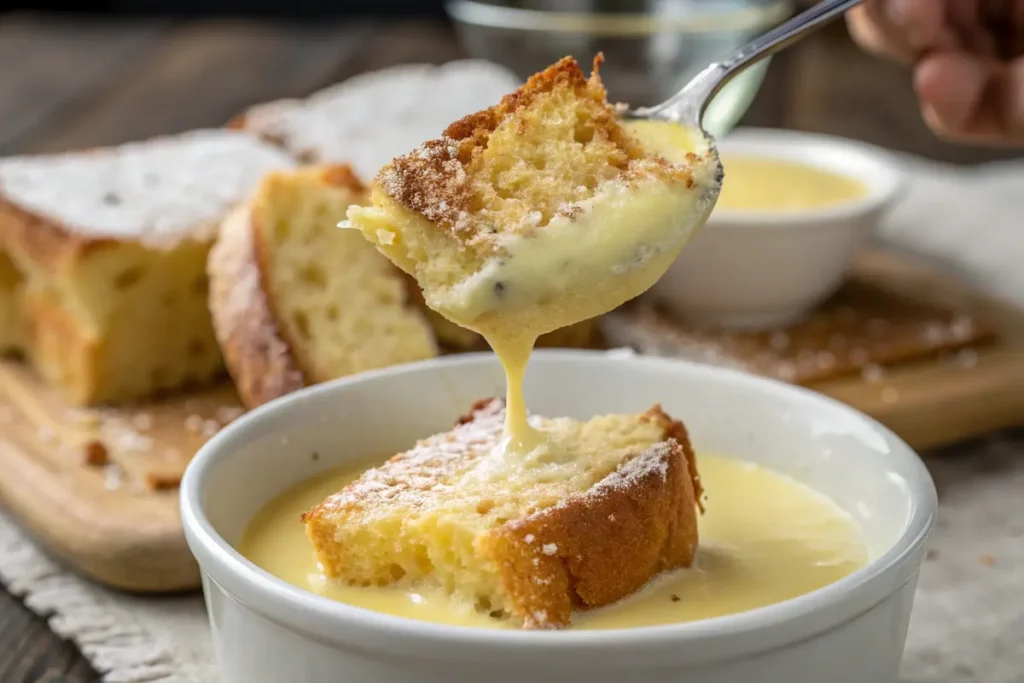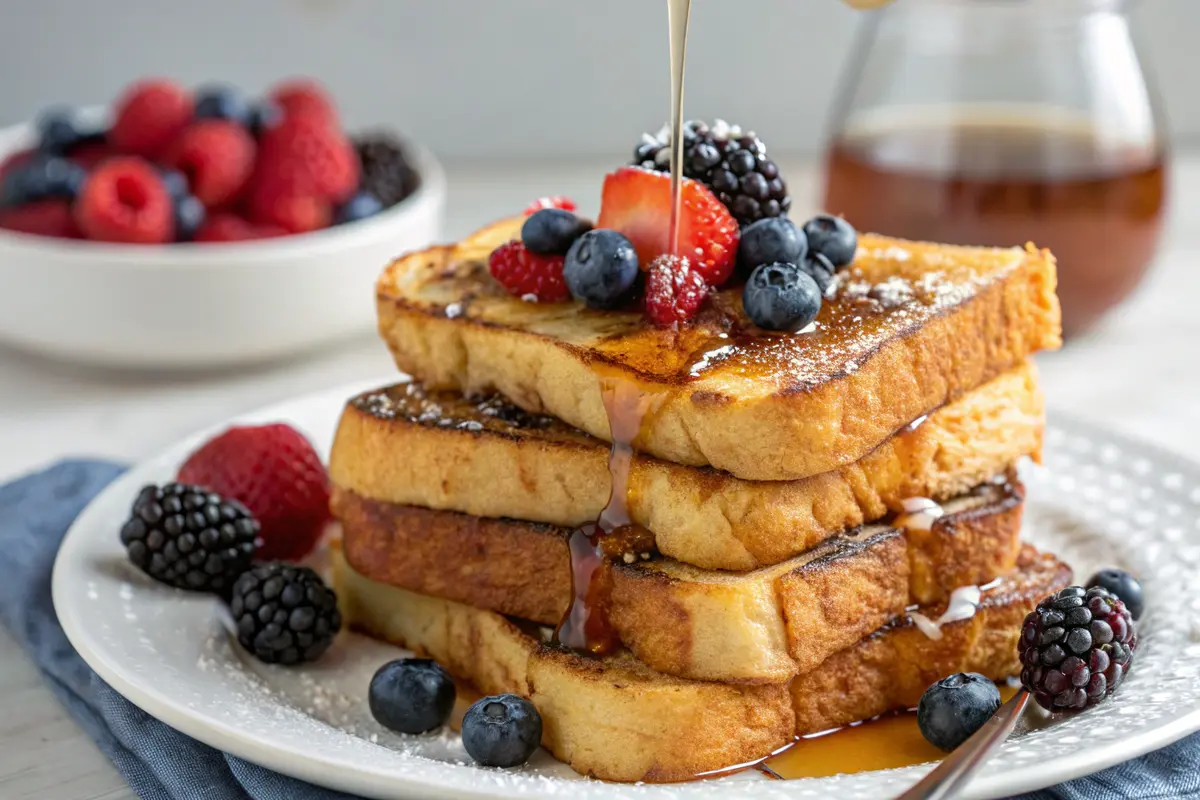Table of Contents
Are you craving a warm breakfast that pleases everyone? If so, barefoot contessa french toast could be the perfect choice. This sweet recipe can be prepared ahead of time, allowing you to relax on busy mornings. Furthermore, you will learn its background, discover expert tips, and resolve common errors. Eventually, when you finish reading, you will have everything you need to create a soft, cozy meal that delights all. Altogether, prepare for a simpler morning that still looks refined.
Why Barefoot Contessa French Toast Is So Loved

Ina Garten, also called the Barefoot Contessa, is one of America’s favorite cookbook writers. Indeed, she designs dishes that blend style with ease. Barefoot contessa french toast reflects this approach. Moreover, it can have a golden top and a velvety center. It transforms everyday pantry items into something fancy. Additionally, the method requires little effort but delivers a top-tier result. Consequently, many appreciate that it can be set up the night before, letting you rest and enjoy your day.
Equally, this dish meets many tastes. You may stick to classic flavors like vanilla and cinnamon, or add fresh fruit for flair. Likewise, children enjoy its gentle sweetness while adults view it as an elevated brunch idea. Notably, another secret to its popularity is its reliability. Even novice cooks can follow Ina Garten’s steps and see success. Hence, her recipes focus on clarity and consistency. As a result, barefoot contessa french toast remains a favorite for holiday brunches, casual weekends, or anytime a special breakfast is in order.
Core Steps for Barefoot Contessa French Toast
Just a few key actions will help you capture the essence Ina Garten intended. Specifically, barefoot contessa french toast hinges on top-quality ingredients and a straightforward assembly process.
Ingredients (in the correct order)
- Challah or Brioche Bread (1 loaf)
- Slightly stale, for optimal custard absorption
- Large Eggs (8)
- Adds richness and firmness
- Whole Milk (2 cups)
- Contributes moisture and a silky texture
- Sugar (½ cup)
- Sweetens the soaked mixture
- Vanilla Extract (1 tablespoon)
- Brings aromatic depth
- Ground Cinnamon (1 teaspoon)
- Infuses subtle warmth
- Ground Nutmeg (¼ teaspoon)
- Complements the overall fragrance
- Butter, melted (2 tablespoons)
- Prevents sticking and increases flavor
Meanwhile, let’s see how these items form barefoot contessa french toast.
- Select the Bread
- A strong loaf, such as challah or brioche, works best. Conversely, day-old slices soak up custard and yield a soft center.
- Whisk the Custard
- Beat the eggs, milk, sugar, vanilla, cinnamon, and nutmeg together. Subsequently, that liquid infuses the bread, giving it a sweet, tender middle.
- Layer the Bread
- Place bread slices in a buttered baking dish. Afterward, pour on the custard so each piece is well-coated.
- Chill Overnight
- Store in the fridge so the bread absorbs the mixture thoroughly, resulting in a creamy texture.
- Bake to Perfection
- Slide it into a heated oven until the dish puffs up and the surface turns lightly golden. Thus, you get a luscious core.
Moreover, many discover that prepping at night eases morning stress. Finally, arrange it all before bedtime and let the oven handle most of the effort next day.
Getting the Bread Right for Barefoot Contessa French Toast
Bread is at the heart of this dish, so choose it wisely. However, your slices must hold shape once soaked in custard. Therefore, opt for a firm loaf with a soft crumb, such as brioche or challah. If the bread is overly fresh, it might become mushy. Likewise, toasting it lightly helps remove any extra dampness. Nevertheless, some chefs cut off crusts for a gentler texture, while others keep them for more chew. In any case, you can still create perfect barefoot contessa french toast either way.
You might also cube the loaf instead of slicing. Accordingly, cubed bread allows the custard to coat each piece. Altogether, that can turn the dish into a bread-pudding-like creation. Keep the cubes uniform so they all bake evenly. Hence, by focusing on bread freshness and thickness, you set yourself up for a seamless brunch.
Practical Tips for the Best Barefoot Contessa French Toast
Even though the recipe is simple, minor details can affect the final taste. Conversely, follow these tried-and-true tips to excel at barefoot contessa french toast.
- Respect the Ratios
- Too many eggs can make it rubbery. Therefore, too much milk could leave it soggy. Stick to the recommended amounts.
- Try Various Add-Ons
- Vanilla, cinnamon, and nutmeg form the base. Meanwhile, orange zest or almond extract can change the flavor profile.
- Soak Adequately
- Give the bread enough time to absorb the liquid. Ultimately, that is how you achieve a plush interior.
- Keep an Eye on Baking
- Times differ by oven. Moreover, leaving it in too long may dry it, but removing it too soon might result in a runny inside.
- Let It Rest
- Once it’s baked, pause briefly before cutting. Indeed, this pause helps the layers stabilize.
Undoubtedly, these pointers turn an average meal into a delightful treat. Likewise, Ina Garten’s calm, approachable style means her ratio and soaking advice almost always brings success.
Different Takes on Barefoot Contessa French Toast
Though the core recipe is delicious as it stands, you can enhance it further. Fruits, nuts, or even chocolate chips can add excitement. Additionally, fresh berries provide tang, while chopped almonds or pecans top it with crunch. Conversely, thin slices of apple or pear can layer extra sweetness between bread. For a polished flourish, dust with confectioner’s sugar or drizzle warm caramel sauce. Meanwhile, those who enjoy savory twists might use herbs or cheese to offset the sweetness.
When adding extras, consider how they affect moisture. Hence, juicy fruits can introduce water, so you may need to reduce milk slightly or simmer the fruit first. Eventually, small changes keep the dish from becoming watery. Altogether, thoughtful tweaks let you tailor barefoot contessa french toast to your liking.
Overnight Prep for Easy Mornings
One of this recipe’s biggest perks is its make-ahead flexibility. Indeed, Ina Garten suggests chilling the mixture overnight to deepen flavor and texture. Additionally, you can slice bread and whisk ingredients in the evening. Thus, the custard and bread meld by morning, ensuring a velvety finish once baked. Equally, you can tackle most cleanup beforehand, which streamlines hosting.
After you complete these steps, place the dish in the fridge. Consequently, you will have fewer tasks the next day. Meanwhile, you can focus on setting the table or preparing a few sides. If you dream of a relaxed brunch with minimal fuss, an overnight soak is ideal.
Favorite Toppings for Barefoot Contessa French Toast
Thoughtful toppings boost this already sweet dish. Therefore, try maple syrup, a beloved classic that pairs with the warm spices. Additionally, fresh fruit brightens the plate. For those who want even more sweetness, warm fruit preserves and drizzle them over each slice. Likewise, a dollop of lightly sweetened whipped cream adds a fluffy note. Nuts, such as walnuts or hazelnuts, supply crunch and a toasty aroma. In particular, for extra flair, you can combine softened butter, sugar, and flour to create a streusel. Scatter it midway through baking so it forms a golden crust. Hence, your barefoot contessa french toast gains a delightful crispness.
Storage and Serving Tips for Barefoot Contessa French Toast

While leftovers rarely last, you can store any remaining portions. Therefore, wrap them or place them in a sealed container for up to three days in the fridge. Moreover, reheating in a low oven or toaster oven helps preserve the texture. Microwaving works, although it tends to soften the exterior. If you wish to freeze them, divide the dish into smaller portions and thaw overnight before gently warming. Hence, you can enjoy a quick, sweet breakfast later in the week.
Serving for a crowd is just as simple. Meanwhile, slice it into squares or wedges and let guests help themselves. Since barefoot contessa french toast can be quite filling, pair it with savory sides. Crisp bacon or scrambled eggs deliver salty balance to the sweetness. Additionally, a fruit salad or fresh-squeezed juice adds color and nutrients. Undoubtedly, this dish’s golden top and soft interior will leave everyone satisfied.
Avoiding a Damp Center
Sometimes the center may stay too moist. Consequently, you can extend the bake time to correct it. Meanwhile, covering the top with foil stops the exterior from scorching. Overly fresh bread can also fail to absorb enough custard, resulting in sogginess. Therefore, choose day-old slices or lightly toast them. Confirm your egg-to-milk ratio as well. Otherwise, you risk a watery dish. A few small changes will keep barefoot contessa french toast from turning overly wet.
Additionally, ensure you use a suitable baking pan. Comparatively, shallow dishes permit more even cooking, whereas deep ones trap moisture in the center. Double-checking oven temperature is another must. Sometimes, ovens run hot or cool. Hence, a small thermometer can ensure accurate temps. By following these steps, you avoid an undercooked center and achieve a fluffy texture.
Conclusion
In short, barefoot contessa french toast stands out as a delicious, low-stress option for brunch lovers. Additionally, the method is straightforward: soak sturdy bread in a sweet egg custard, rest it, then bake until golden. The outcome is a soft, fragrant dish sure to charm your guests. Indeed, Ina Garten’s well-tested process empowers anyone, from novices to seasoned cooks, to whip up an impressive treat.
Moreover, this recipe invites experimentation. You might add fruit or nuts, or perhaps swirl in caramel sauce before baking. Meanwhile, its overnight assembly slashes morning chaos, especially useful if you plan to entertain. This simplicity is a big reason barefoot contessa french toast remains a star at weekend brunches. Finally, if you pick solid bread, keep the egg and milk in balance, and let the oven do the rest, you will have an aromatic, comforting dish. Gather your supplies, whisk up that sweet custard, and embrace a cozy meal that delights all.
FAQ
What is the most common mistake in making French toast?
Often, people choose the wrong bread. Therefore, if it is too fresh or too soft, it might result in mushy slices. Another error is rushing the soaking process. Specifically, whether making single-slice French toast on a griddle or preparing a barefoot contessa french toast casserole, letting the bread fully absorb the custard is crucial. Plus, too high a heat can burn the surface while leaving the inside raw. Basically, pick the right bread, soak enough, and maintain a medium heat.
What’s the difference between Texas French toast and French toast?
Texas French toast uses thicker bread slices, often about twice the usual thickness. Thus, they hold more custard, yielding a denser bite. Standard French toast tends to have thinner bread. In a similar vein, barefoot contessa french toast also calls for thicker loaves like challah or brioche. Still, the essential method is the same: soak bread in an egg mixture, then cook it until golden.
Why is my French toast casserole soggy?
Several factors may cause sogginess. Firstly, overly fresh bread cannot soak up enough liquid. Secondly, an incorrect egg-to-milk ratio can create excess moisture. Finally, underbaking can leave the center wet. Therefore, if your barefoot contessa french toast remains mushy, bake it longer. Use foil to shield the top if it browns too fast. Ensuring a shallow pan and accurate oven temperature also helps.
What is French toast casserole made of?
French toast casserole typically includes bread, an egg-and-milk mixture, plus sweet components like sugar and vanilla. Notably, barefoot contessa french toast aligns with these basics yet adds Ina Garten’s refined touch. Quality bread, warm spices, and a final golden bake define this classic approach. Sometimes, fruit or cream cheese can be folded in. Others add crumb toppings for extra texture. The end result is a gently browned exterior hiding a custard-like interior.
For more delecious recipes :

